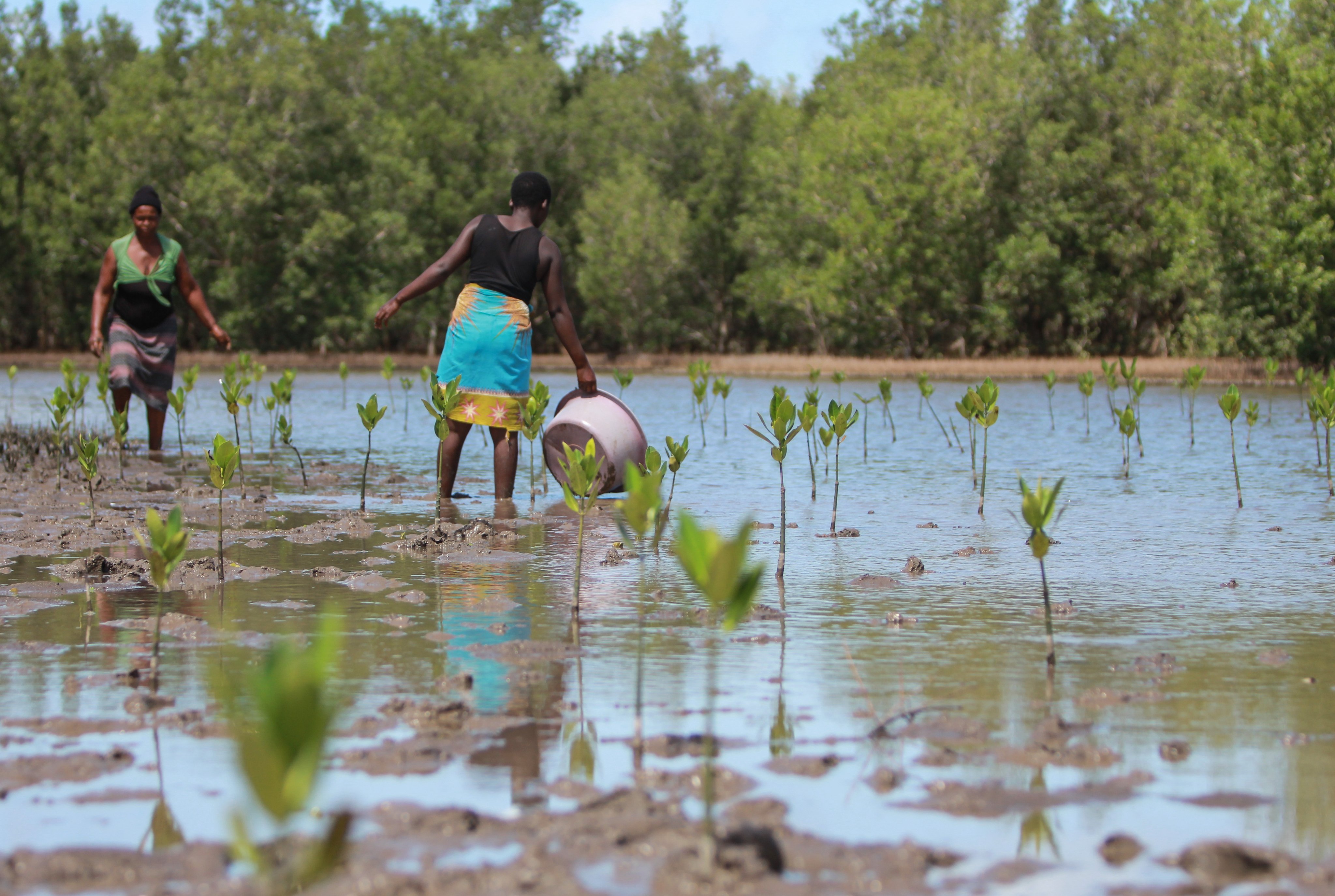Countries worldwide have pledged to plant millions of hectares of trees to offset their greenhouse gas emissions, but many of these efforts, as currently formulated, will do little or nothing to stem global warming and could jeopardize the world’s food supply and the rights of Indigenous Peoples and local communities, a new report warns.
The pledges are rooted in the concept of “net zero” emissions, where humans don’t pump more carbon into the atmosphere than the planet can absorb. Net zero can be reached by reducing emissions or by increasing absorption of CO2, and many industrialized countries have pledged to plant or restore forests to offset emissions.
But although the calculation looks straightforward on the ledger books, nature is more complex.
“It’s not that nature-based solutions are bad,” says CIFOR-ICRAF senior scientist Anne Larson, who will lead a panel discussing the new Land Gap Report on 11 November at the COP27 climate summit in Sharm El-Sheikh, Egypt. “Planting trees is good, but it needs to be the right tree in the right place and for the right purpose, and those decisions can’t be made without local people.”
When scientists added up the amount of land pledged for reforestation, large-scale tree plantations and restoration of degraded ecosystems, it totalled nearly 1.2 billion hectares. That’s an area larger than the United States and four times the size of India, and is equivalent to the amount of land currently used to grow crops to feed the world’s people, the study says.
And it raises some problems.
The first is with the accounting behind the pledges to reach “net zero” by 2050.
On paper, it may look easier for industrial countries to plant forests instead of reducing emissions, but forests grow slowly and emissions must be cut quickly to hold the increase in average global temperatures below 2 degrees Celsius by mid-century.
“Planting trees is not a substitute for reducing emissions,” says Kate Dooley, a research fellow at Australia’s Melbourne University and lead author of the report. “Carbon emissions from burning fossil fuels are not cancelled out by removing carbon into trees and ecosystems – these are fundamentally different processes in terms of the stability of their carbon stocks. Just as you can’t make up for losing forest by planting trees, you can’t plant trees to make up for burning fossil fuels.”
And although some countries offer details about pledges based on forests or landscape restoration, many are vague, so countries need to be more transparent about their carbon accounting, Dooley says.
“There are a lot of studies pointing to the need for more transparency in net-zero goals and targets,” she adds. “’Net zero’ on its own doesn’t mean anything – you have to be transparent about what you are going to do.”
That transparency must also extend to where the trees will be planted, the study’s authors say. Most industrialized countries with high emissions are in the global North, while many of the countries targeted for tree planting are in the global South.
The problem, Larson says, is that much of the land that would be needed is already occupied or used by Indigenous Peoples or other local communities, including small-scale farmers and nomadic herders. Demand for land for carbon offsets further jeopardizes the land rights and food security of people who are already vulnerable.
“There aren’t that many places where there are no people,” Larson says. “You can’t meet all of these land-based pledges without touching Indigenous Peoples’ and local communities’ land. Historically, Indigenous and local communities are peoples who have been marginalized. Their land has been taken away through land grabs of all kinds. Without secure land rights, why would anything be different now? There needs to be a fundamental change in the way we engage with these communities.”
Various studies have shown that when Indigenous Peoples and local communities have secure land rights, their forests are protected as well as or better than those in state-managed areas, while the land also supports greater biodiversity and provides a livelihood for the inhabitants. But although those peoples have customary use of nearly half the planet’s land, they have secure rights to only about 20% of that amount.
That often means that the communities do not show up on official maps, making land appear to be unoccupied when in fact it has sustained communities for generations. Pledges that involve converting land to forest could put even more pressure on those communities and increase the possibility of conflict over resources, the study says.
Crucially, Larson says, local communities and Indigenous Peoples must not be seen simply as “beneficiaries’ of projects designed by outside experts, but must have decision-making power from the very beginning of a project.
Even ecosystem restoration can undermine local communities’ rights and limit access to resources if not done well, she adds. The key is granting full and secure land rights – a battle that often must be fought again and again, as outside interests encroach on communities.
Among the most vulnerable groups of people are traditional nomadic herders in Africa, according to Kimaren Riamit, founder and director of Indigenous Livelihoods Enhancement Partners in Kenya and one of the report co-authors. These pastoralists have traditional ways of managing and sharing dryland ecosystems, but because they generally lack formal land rights, outsiders have gradually encroached on their territories. There is increasing risk now from wind and solar energy projects, landscape restoration and carbon-capture schemes.
The good news, the scientists say, is that some countries are already taking steps in the right direction.
Nearly half the amount of the land the study calculates is included in climate pledges is slated for restoration of degraded lands and ecosystems, which allows people to continue to use the land. That’s a sign that governments are becoming more aware of the importance of restoration, not just for climate change mitigation but also for protecting biodiversity and ensuring livelihoods.
“Land is about food, it’s about human rights, it’s about livelihoods,” Dooley says. The emphasis, she adds, should be on restoration “of mixed land uses, where forests and farming and people are together. That’s the highest priority, because of the importance of that land for food security and for livelihoods.”
Less-industrialized countries, where agriculture is the largest source of carbon emissions, can benefit from agroforestry, which combines forests and mixed crops for production, and agroecology. In this holistic approach to agriculture, principles for both social and ecological well-being combine to enhance biodiversity and promote human rights, the study’s authors say.
In pointing out the enormous amount of land included in climate pledges, “we’re not saying that it’s good or bad. We’re saying that this is real land, with people living on it, with food being grown, and this is an enormous area of land for CO2 removals in country pledges,” Dooley says.
“If land is part of meeting climate goals, then countries need to think very carefully about their approach,” she adds. “What’s the land management plan? How are rights going to be recognized? How are decisions going to be made? Comprehensive and consultative approaches to land planning will be needed to do this in a way that will be beneficial.”




